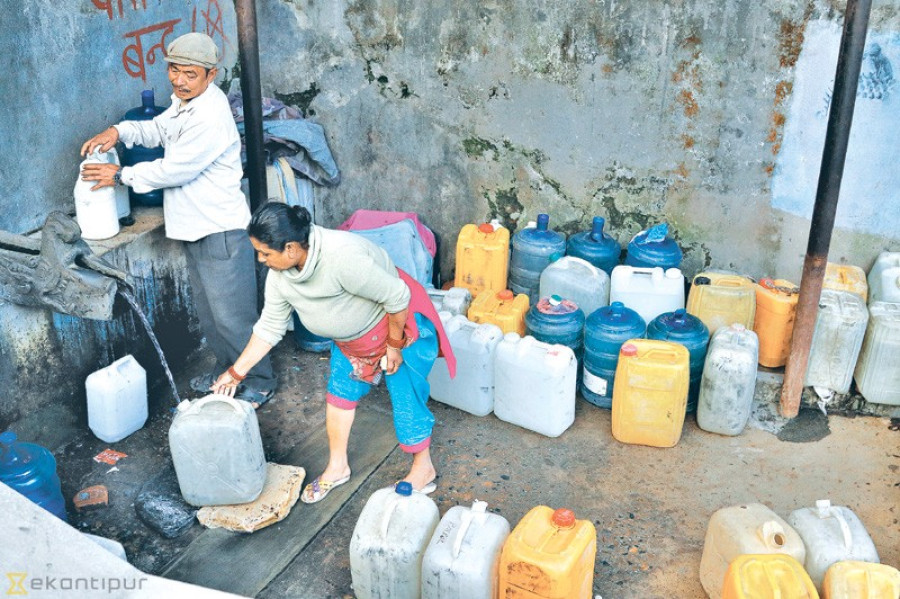Editorial
Water security is a major issue for small and medium-sized cities, too
As cities are becoming more prone to water scarcity, the government needs to pay heed.
Dharan and Dhulikhel have been in the news recently for a water crisis that has made people from across both cities suffer. In Dharan’s case, it has been suffering from water security issues for 15 years. But the problem has become acute over time and is now becoming one of the biggest worries for its denizens.
Dhulikhel and Dharan are situated quite far from each other. While Dhulikhel is just southeast of Kathmandu Valley, Dharan is located in eastern Nepal. But there are similarities between the two; both are towns with a flourishing tourism sector, and they are also thriving medical education hubs. However, the uncontrolled utilisation of natural resources to supply to the demands of an ever-growing population has brought about water shortage problems to these cities. What’s more, a recent study has found out that providing adequate amount and acceptable quality of water for their residents will be an even bigger challenge in the future. Unplanned urbanisation coupled with the increasing effects of climate change means that water sustainability is turning out to be a major issue.
Droughts and water shortages are not new in the Himalayas. But the haphazard construction of roads and urban sprawl have affected natural recharge points for groundwater. Both Dharan and Dhulikhel are dependent on springs, streams, rivers and groundwater for meeting domestic and commercial water needs. Water scarcity in the face of rapid urbanisation and climate change is now a global issue. The most recent example is that of Chennai—a city in India. Chennai was parched, with the entire state reeling under a debilitating water crisis. Global warming contributing to erratic monsoon caused Chennai to undergo severe drought.
Droughts occur slowly as compared to other natural hazards. They start without warning but more often than not, they are a result of human folly. Owing to a skewed idea of development, most of our cities are losing its green cover which, in turn, has led to the loss of groundwater.
Population stress on cities has undoubtedly exacerbated the problems of water availability and management. It is a ticking time bomb. To manage the crisis, a major focus should be on decentralisation. As long as people flock to urban areas in search of better opportunities and access to proper health and education services, cities will keep on getting overcrowded. As a corollary, its natural resources will get abused to the hilt as well. If the population is spread evenly across the country, most cities will not be water-stressed. What’s more, the government must put effective plans in place for revitalising aquifers and introduce mandatory rainwater harvesting for households and commercial buildings.
Proper regulation coupled with inter-departmental cooperation, integrated approach to managing water supplies including drainage and wastewater, as well as, reducing leakage losses can prove effective in addressing water scarcity where the problem has already reared its ugly head. As Nepal is among the most vulnerable countries when it comes to being impacted by climate change, there are enough warning signs to take the issue seriously.
***
What do you think?
Dear reader, we’d like to hear from you. We regularly publish letters to the editor on contemporary issues or direct responses to something the Post has recently published. Please send your letters to [email protected] with "Letter to the Editor" in the subject line. Please include your name, location, and a contact address so one of our editors can reach out to you.




 14.12°C Kathmandu
14.12°C Kathmandu














